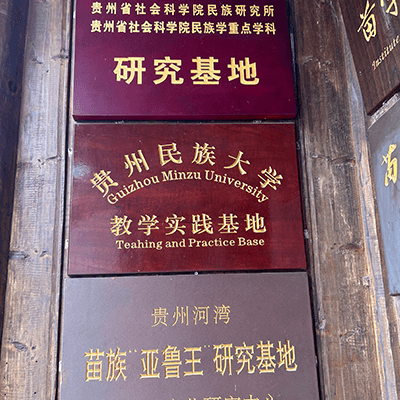In China, Hmong people mainly live in Hunan, Yunnan, Sichuan, Guangxi, and Hubei provinces. Throughout the years, many Hmong people also migrated to other countries and brought their culture overseas. Hmong communities can be found in Laos, Thailand, the United States, France, and other regions. They have a fascinating linguistic profile: there are nearly 200 branches of three major dialects (western, eastern, and central), each with a unique cultural framework. Unfortunately, Hmong's cosmology, oral folklore, customs and religious ceremonies, are becoming less relevant in the modernized world. In the foreseeable future, without sufficient protection, the Hmong culture will be reduced into lifeless documents in museums and eventually forgotten by its people. The Outlook Future Community believes that it is vital to take measures in sustaining and promoting the rich culture of Hmong.



Dabkiangvongx is a festival of the Hmong communities in Guiyang. It is popular on both sides of Qingshui River in Taijiang County, Shibing County, and on both sides of Bala River in Taijiang County.
The festival is held from May 24 to 27 annually on lunar calendar. During the festival, Hmong people gather in Tangba Village, Shidong Town, and middle reaches of Qingshui River to celebrate a three-day canoe dragon boat race.


Although the Hmong’s cultural traits are still inherent in their communities, local schools do not actively instruct Hmong teenagers about their culture. Young Hmongs participate in their festivals, but they lack understanding of their ethnic history, cultural connotation and social significance of the traditional events.


Guizhou Hewan Hmong Research Institute is a Hmong culture research and development institution integrating academic research with industrial development and innovation. It is committed to the study, inheritance, and protection of Hmong culture, as well as promoting the healthy development of Hmong culture.
The Institute is located in Taijiang, the first Hmong County in the world, in Qiandongnan Hmong and Dong Autonomous Prefecture. This area has the highest proportion of Hmong residents in the world (97% of the Hmong population) and it has one of most well-preserved natural and cultural ecological environment in Guizhou Province. Hewan Institute is currently the nation's largest field study center, with world-class research on Hmong culture. The Institute actively collaborates with domestic and foreign institutes such as Central University for Nationalities, Guizhou University, and Brittany Culture Protection Association. The institute has established close and mutual trust in academic cooperation with many authorities in the field of Hmong research. Professor Yang Peide, President of Hewan Hmong Research Institute, is also known as "Zhai Lao" in recognition of his outstanding achievements in Hmong’s field research.


The Outlook Future Community decides to integrate social resources and implement the sustainable development of Hmong culture. Hmong communities need elevated work to ensure sustainable development and earn its cultural relevance in the new era.
1. In-Depth Field Study of Hmong Rituals
-Participate in festivities such as Dabkiangvongx and examine group dynamics at cultural events
-Document the process of the through field participation, front-line observation, interviews with villagers, and discussions with experts on Hmong culture
-Capture and promote ceremonial highlights through various media mediums (e.g. photography, videos, documentary, Tik Tok)
2. Bridge the Hmong Youth and Their Cultural Heritage
-Establish a renewed learning plan for Hmong teenagers to connect with their culture
-Set up libraries with multi-media resources for Hmong teenagers
-Help Hmong teenagers with their career plans and navigate them to explore entrepreneurial opportunities within the community
-Connect international Hmong communities

